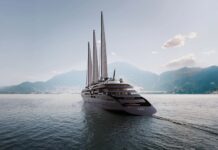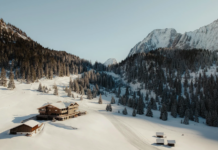During the 1950s, car designers on both sides of the Atlantic produced some of the all-time greats of automotive styling, none of them more classically beautiful than the sublime BMW 507. Indeed, a measure of the 507’s iconic significance may be discerned from BMW’s ‘re-introduction’ of the model, after a gap of 40 years, in the form of the Z8 roadster.

In an age when it has become de rigeur for heritage-conscious motor manufacturers to incorporate styling cues from landmark models into their latest offerings, few have ventured as far as BMW in paying homage to a recognized classic. Transatlantic in inspiration – aimed at the United States market, styled by a New York-domiciled German ex-patriot and built in Germany – the 507 reflected North American taste yet was unmistakably European in origin. The 507 saga began in 1954, when Austrian-born entrepreneur Max Hoffman, at that time the US importer of various European makes, convinced BMW that if they built a sports car to rival Mercedes-Benz’s successful 300 SL, he could sell sufficient in the ‘States to make the project viable. Hoffman knew just the man to style the car too: Count Albrecht von Goertz, an independent industrial designer who had worked for the legendary Raymond Loewy on the latter’s trend-setting Studebakers. Designer of everything from fountain pens to furniture, Goertz had never before styled an entire car, and post-507 would not work for BMW again until the 1980s.
The fundamental elements of BMW’s proposed new sports car already existed in the 502 saloon, most notably its 3.2-liter, all-aluminum V8 engine, which was installed in a shortened chassis for the 507. Mechanical design was handled by BMW stalwarts Fritz Fiedler and Alex von Falkenhausen, with Goertz shuttling back and forth between the USA and Germany to oversee production of the full-size clay model. The robust nature of the 502-based chassis necessitated the use of aluminum for the 507’s bodywork in the interest of weight saving, the finished car tipping the scales at around 1,280kg. With 150bhp on tap, performance was adequate if not stunning, production cars being capable of around 200km/h (125mph), with 100km/h (62mph) coming up in 11 seconds. For relaxed cruising though, the 507 had few peers, its state-of-the-art V8 engine delivering ample torque over a wide rev range.
Although the prototype displayed at the 1955 Frankfurt Auto Show met with critical acclaim, the 507’s reception at its New York debut two months earlier had been disappointing. BMW had missed Hoffman’s $5,000 price target by a wide margin, the 507’s initial US selling price being set at $9,000, more than double the cost of a Ford Thunderbird or Chevrolet Corvette. In the UK, one could buy two Jaguar XK150s for the price of a single 507. Even Mercedes-Benz’s 300 SL Coupé was cheaper, though the Stuttgart firm was sufficiently impressed (worried?) by the 507 to introduce a direct competitor in the form of the 300 SL Roadster.
Production proper of the 507 did not begin until 1956, the first series being built until June 1957 when the design was revised in detail. Improvements were mainly concentrated on the interior, which gained a deeper dashboard, a greater range of fore-and-aft seat adjustment, and a rear parcel shelf. There was, almost inevitably, an increase in price that only served to place the 507 even further beyond the reach of ordinary mortals. For those who could afford style at any price however, BMW’s svelte roadster was the car to be seen in: pop idol Elvis Presley, motorcycling World Champion John Surtees, film stars Alain Delon and Ursula Andress, skiing champion Toni Sailer, Prince Rainer of Monaco, and the Aga Khan all being owners at one time or another. Nevertheless, such a limited clientele, however exclusive, could not sustain the 507 in production, which ceased in December 1959 after only 253 cars had been sold.

THE MOTORCAR OFFERED
This stunning example of the fully developed Series II BMW 507 is offered from nearly 30-year custodianship and offers the next caretaker top-level entry to the world of BMW car collecting, along with an entry into some of the most prestigious events around the globe, such as the Ville d’Este or Pebble Beach Concours d’Elegance, the Colorado Grand or other exclusive driving events. 507 chassis number 70205 was most likely produced during 1958 at the Munich-based BMW factory. A second series example, it featured the increased engine capacity of the all-aluminum V8 and therefore higher performance, as well as a revised dashboard and a roomier cockpit, accommodating taller drivers. The new top-of-the-line BMW is believed to have been delivered to the US, where Max Hoffman would have been the importer. The original VDO gauges situated in the dash read in MPH and Fahrenheit, further suggesting the US market as initial destination. On close inspection today, lovely silver blue metallic paint can be found underneath the dash area, which quite possibly would have been the color the car was finished in from new. By the 1960s, BMW 507 number 70205 is known to have been owned by a Mr. Lacklan M. Mackenzie of Staten Island, and then later, in the 1970s and 1980s, the car was in the hands of Mr. Shane O’Neil of RKO General, Inc, New York, grandson of RKO founder, the renowned Hollywood film studio. A sympathetic restoration was performed in the late 1980s, at which time the striking BMW is believed to have received is current Black exterior color. Post restoration, the 507 is known to have appeared at various Concours d’Elegance events with much success. The car was acquired by the current prominent collector in the early 1990s and has since been kept in a climate-controlled environment.
507 chassis number 70205 appears to have received a factory replacement engine early on, as no engine number is stamped on the engine block. However, the engine block is stamped ‘150 PS’ which would indicate 150 horsepower, which is indeed the rating for a proper 507 engine. The BMW logo is also stamped next to the horsepower rating. Today this stunning 507 Series II Roadster presents in beautiful condition, and close inspection indicates that the car retains much of its originality and appears not to have been taken apart of neglected in its past. It is possible that the interior is original as well. Original components are present and in situ, including the Behr radiator, and many Bosch and Knecht ancillary components. The chrome and brightwork appear to be largely original, and still in wonderful condition. A very rare original Becker Mexico radio is fitted in the dash. The BMW 507, despite its contemporary commercial limitations, proved to be a landmark model for the German manufacturer. Only 253 examples of BMW’s now-legendary 507 were built. An exceptional and exclusive sports car indeed – rarer than the 300SL Mercedes-Benz, the 507 with its lithe and utterly beautiful design matched by the impressive sporting pedigree of the Bavarian marque, remains a truly timeless collector car, appreciated by top collectors around the work, and eligible for the World’s most discerning collector car events.
Report by bonhams.com










